Comments:"The Art of Ofey: Richard Feynman's Sketches and Drawings | Brain Pickings"
URL:http://www.brainpickings.org/index.php/2013/01/17/richard-feynman-ofey-sketches-drawings/
“I wanted to convey an emotion I have about the beauty of the world…this feeling about the glories of the universe.”
Image may be NSFW.
Clik here to view. Just like Sylvia Plath and Queen Victoria, Nobel-winning physicist Richard Feynman— champion of scientific culture, graphic novel hero, crusader for integrity, holder of the key to science, adviser of future generations, bongo player— was a surprisingly gifted semi-secret artist. He started drawing at the age of 44 in 1962, shortly after developing the visual language for his famous Feynman diagrams, after a series of amicable arguments about art vs. science with his artist-friend Jirayr “Jerry” Zorthian — the same friend to whom Feynman’s timeless ode to a flower was in response. Eventually, the two agreed that they’d exchange lessons in art and science on alternate Sundays. Feynman went on to draw — everything from portraits of other prominent physicists and his children to sketches of strippers and very, very many female nudes — until the end of his life.
Just like Sylvia Plath and Queen Victoria, Nobel-winning physicist Richard Feynman— champion of scientific culture, graphic novel hero, crusader for integrity, holder of the key to science, adviser of future generations, bongo player— was a surprisingly gifted semi-secret artist. He started drawing at the age of 44 in 1962, shortly after developing the visual language for his famous Feynman diagrams, after a series of amicable arguments about art vs. science with his artist-friend Jirayr “Jerry” Zorthian — the same friend to whom Feynman’s timeless ode to a flower was in response. Eventually, the two agreed that they’d exchange lessons in art and science on alternate Sundays. Feynman went on to draw — everything from portraits of other prominent physicists and his children to sketches of strippers and very, very many female nudes — until the end of his life.
The Art of Richard P. Feynman: Images by a Curious Character (UK; public library) collects a quarter century of Feynman’s drawings, curated by his daughter Michelle, beginning with his first sketches of the human figure in 1962 and ending in 1987, the year before his death.
Clik here to view.
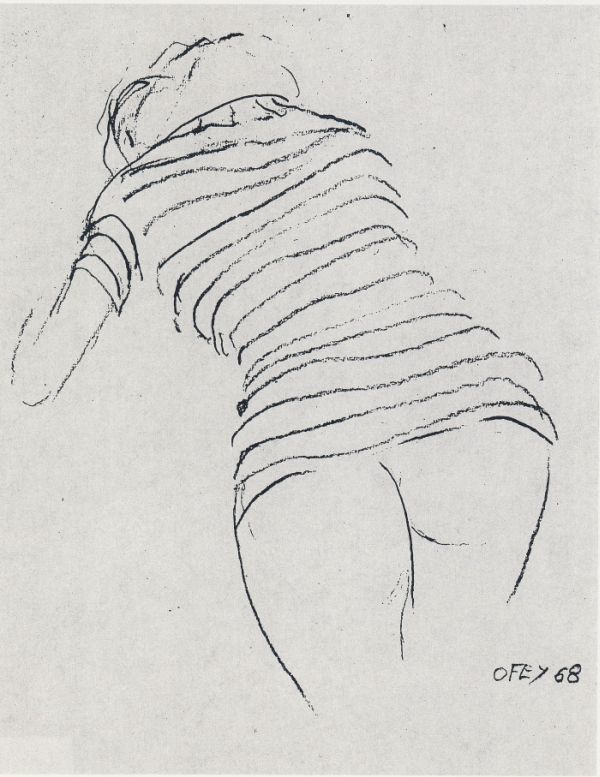
Dancer at Gianonni's Bar (1968)
In an introductory essay titled “But Is It Art?,” Feynman recounts his arrangement with Jerry and observes the intersection of art and science:
I wanted very much to learn to draw, for a reason that I kept to myself: I wanted to convey an emotion I have about the beauty of the world. It’s difficult to describe because it’s an emotion. It’s analogous to the feeling one has in religion that has to do with a god that controls everything in the universe: there’s a generality aspect that you feel when you think about how things that appear so different and behave so differently are all run ‘behind the scenes’ by the same organization, the same physical laws. It’s an appreciation of the mathematical beauty of nature, of how she works inside; a realization that the phenomena we see result from the complexity of the inner workings between atoms; a feeling of how dramatic and wonderful it is. It’s a feeling of awe — of scientific awe — which I felt could be communicated through a drawing to someone who had also had that emotion. I could remind him, for a moment, of this feeling about the glories of the universe.Clik here to view.
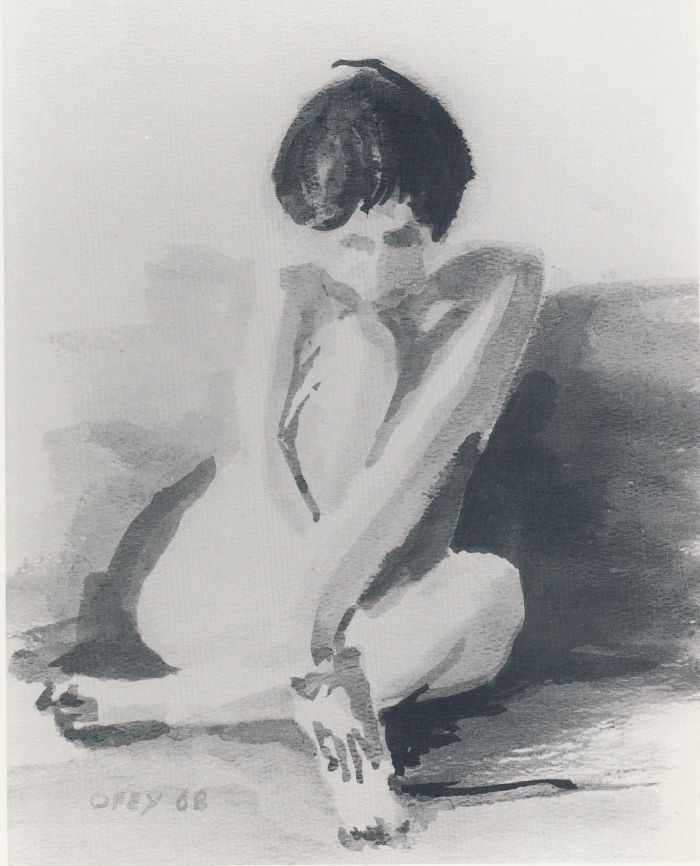
Female Posing (1968)
Clik here to view.
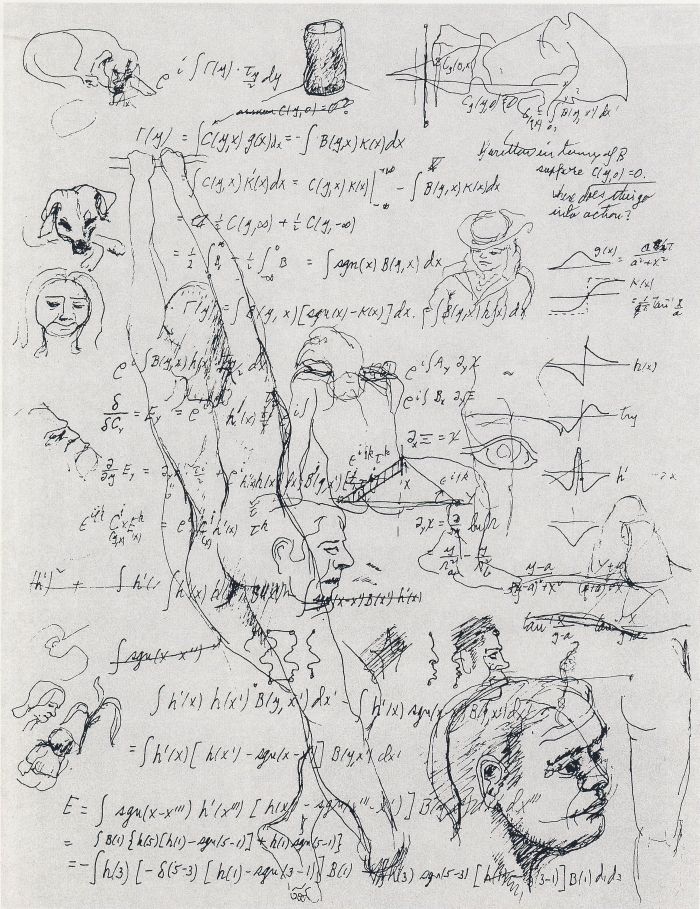
Equations and Sketches (1985)
Clik here to view.

Martha Bridges (1965)
Clik here to view.
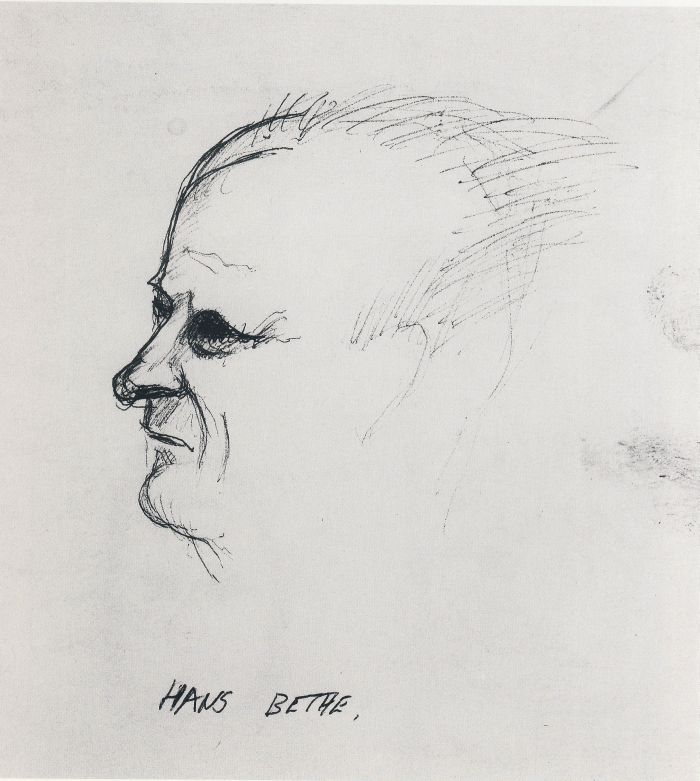
Hans Bethe (date N/A)
Clik here to view.
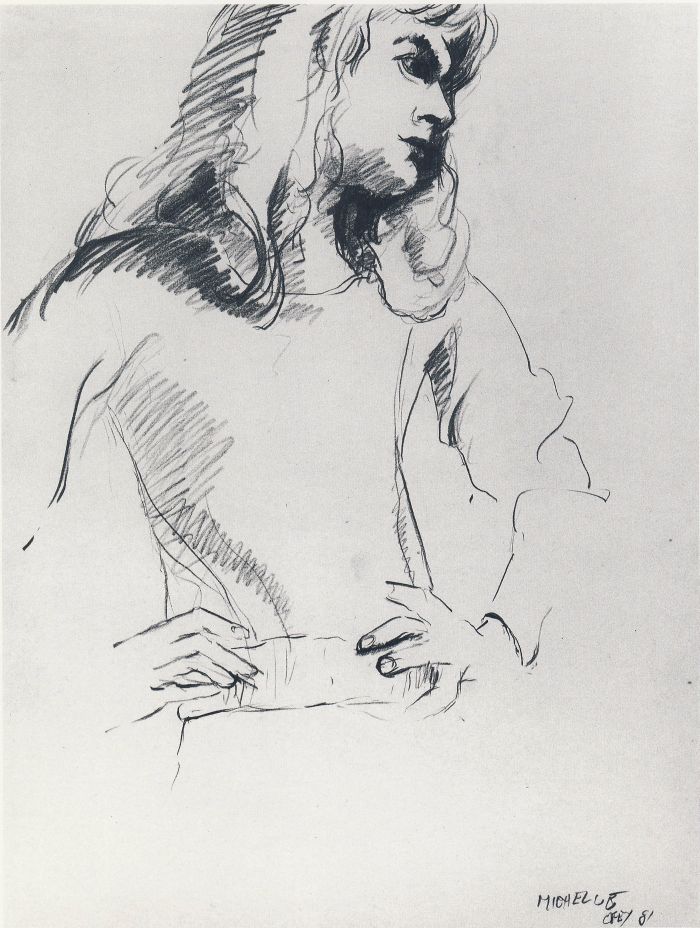
Michelle Feynman (1981)
Clik here to view.
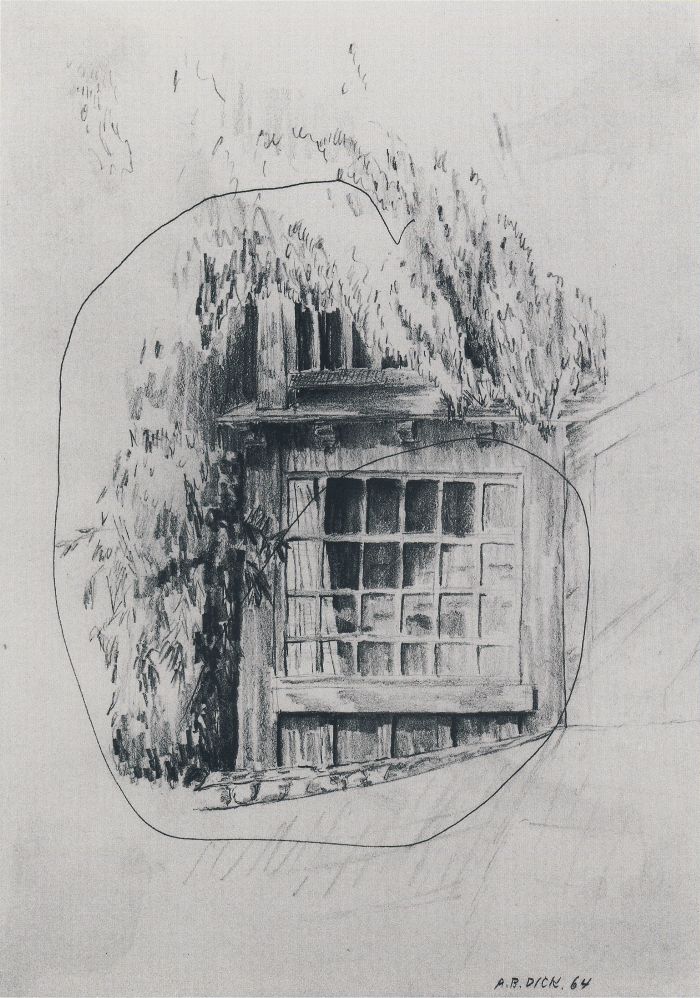
Sketch with Last Line by Carl Feynman, age 2 (1962)
Once Feynman decided to sell the drawings upon a friend’s suggestion, he was cautious of people fetishizing them because of his academic prominence and the sheer curiosity of a distinguished scientist who dabbles in art, so he decided to adopt a pseudonym: Ofey. Feynman explains the origin:
My friend Dudley Wright suggested ‘Au Fait,’ which means ‘It is done’ in French. I spelled it O-f-e-y, which turned out to be a name the blacks used for ‘whitey.’ But after all, I was whitey, so it was all right.Clik here to view.

From Behind (1985)
Clik here to view.

Jirayr Zorthian (date N/A)
Clik here to view.

Nude from the Rear (1979)
Clik here to view.
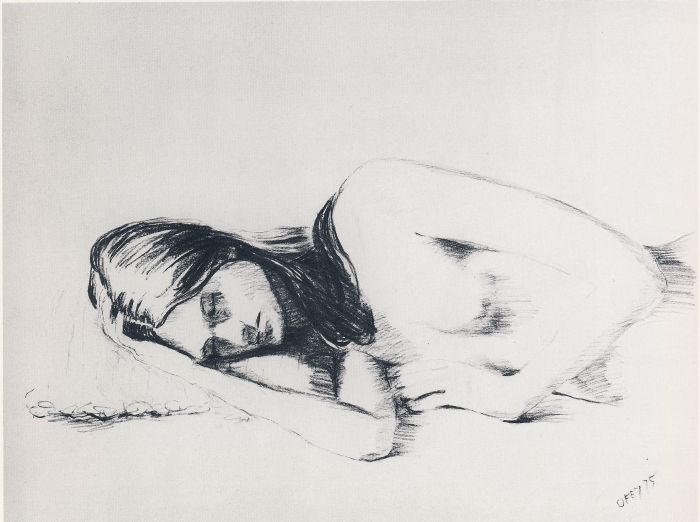
Nude Sleeping (1975)
Clik here to view.

Portrait of a Stripper (1969)
In the introductory essay, Feynman also considers the differences in teaching art and teaching science, a disconnect Isaac Asimov has famously addressed in his passionate case for creativity in science education. Feynman writes:
I noticed that the teacher didn’t tell people much (the only thing he told me was my picture was too small on the page). Instead, he tried to inspire us to experiment with new approaches. I thought of how we teach physics: We have so many techniques—so many mathematical methods—that we never stop telling the students how to do things. On the other hand, the drawing teacher is afraid to tell you anything. If your lines are very heavy, the teacher can’t say, “Your lines are too heavy.” because some artist has figured out a way of making great pictures using heavy lines. The teacher doesn’t want to push you in some particular direction. So the drawing teacher has this problem of communicating how to draw by osmosis and not by instruction, while the physics teacher has the problem of always teaching techniques, rather than the spirit, of how to go about solving physical problems.Clik here to view.
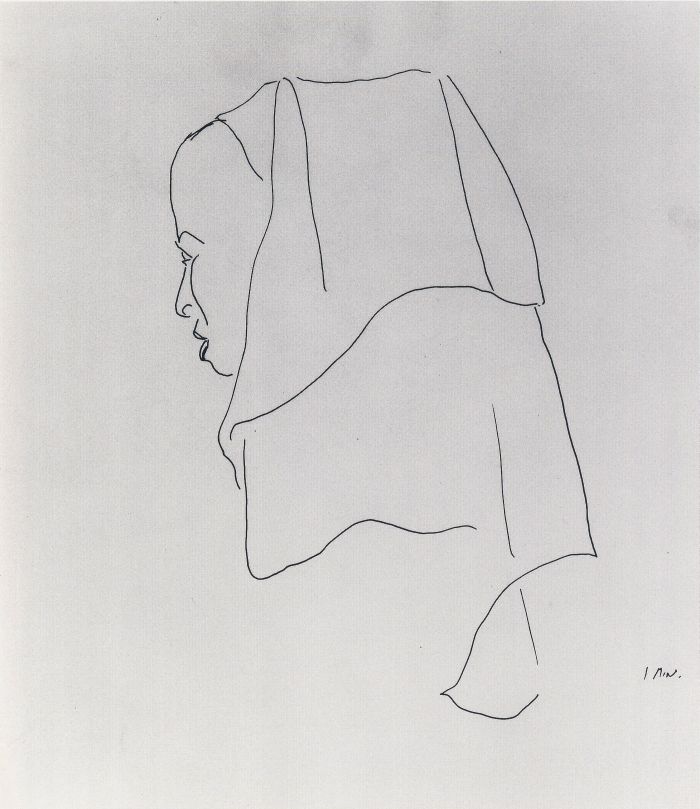
1 Minute Line Drawing (1985)
Clik here to view.

Portrait of a Woman (1983)
Clik here to view.

Sheet of Studies (date N/A)
Clik here to view.
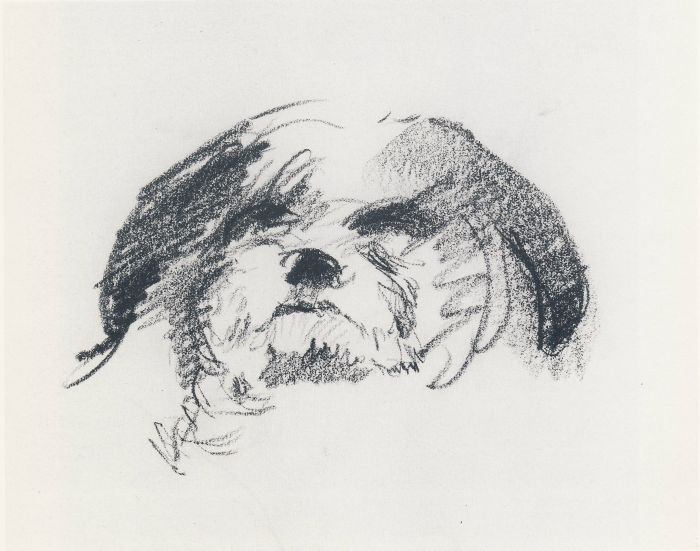
Rufus (1985)
Clik here to view.

Richard Feynman's First Drawing (1962)
Though The Art of Richard P. Feynman: Images by a Curious Character is sadly long out of print and thus a collector’s item, you can find the essay “But Is It Art” in the fantastic 1985 anthology Surely You’re Joking, Mr. Feynman! (Adventures of a Curious Character).
↬It’s Okay To Be Smart; images courtesy Museum Syndicate
Donating = Loving
In 2012, bringing you (ad-free) Brain Pickings took more than 5,000 hours. If you found any joy and stimulation here this year, please consider becoming a Member and supporting with a recurring monthly donation of your choosing, between a cup of coffee and a fancy dinner:
You can also become a one-time patron with a single donation in any amount:
Image may be NSFW.
Clik here to view. Brain Pickings has a free weekly newsletter and people say it’s cool. It comes out on Sundays and offers the week’s best articles. Here’s what to expect. Like? Sign up.
Brain Pickings has a free weekly newsletter and people say it’s cool. It comes out on Sundays and offers the week’s best articles. Here’s what to expect. Like? Sign up.
Clik here to view.